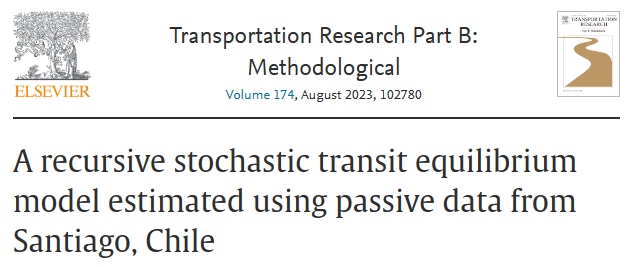Cristián E. Cortés, Pedro Donoso, Leonel Gutiérrez, Daniel Herl, Diego Muñoz
Abstract
A strategic public transport equilibrium model is developed that considers each user’s trip decision, covering the choices of access stop, mode and line, alighting stop, and transfer or egress. At each stage, these choices are considered to be stochastic and made under capacity constraints resulting in waiting time increases at stops and stations due to demand levels and/or arriving vehicle loads. The modeling strategy is based on the hyper-path concept, but rather than evaluate user strategies, the approach models transitions at all individual nodes, thus facilitating computational efficiency. In this approach, we develop a recursive method different from resolving explicitly a recursion based on Bellman´s equation, which is suitable for large and dense transit networks. A method is presented for estimating the model parameters, which was applied to the real case of the Santiago, Chile transit system based on passive transaction datasets generated by users’ smart cards and GPS technology aboard the system’s buses. These data were used to estimate alighting stops and an exhaustive and disaggregate reconstruction of all user trips. Once calibrated, the model proved able to predict the trip assignments observed in the calibration dataset as well as datasets from later periods, making predictions that closely fit the observations and adapting well to changes in network topology, operating patterns, and user demand. Therefore, the model should have considerable potential as a powerful, flexible, and highly useful tool for system regulators and operators who define public transport structures, operations, and policies.
